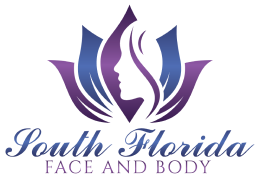
When it comes to non-surgical cosmetic treatments for smoothing fine lines and wrinkles, neuromodulators like Botox, Dysport, and Xeomin are the gold standard. Each has been FDA-approved to temporarily reduce muscle activity that causes wrinkles, yet many patients are left wondering—which one is best for me?
In the vibrant beauty culture of South Florida, where sun exposure, stress, and active lifestyles are constant, many turn to these neurotoxins as part of their beauty regimen. However, understanding the subtle but important differences between these three can help you make the most informed decision for your skin and aesthetic goals.
In this article, we will break down each product’s formulation, mechanism of action, onset time, duration, spread characteristics, cost differences, and ideal usage scenarios, helping you make an educated choice for your next injectable treatment.
What Are Neuromodulators?
Neuromodulators are purified proteins derived from the botulinum toxin type A. They temporarily block nerve signals to muscles, causing them to relax. This leads to a visible reduction in dynamic wrinkles, which are formed by repetitive facial expressions such as squinting, frowning, or raising the eyebrows.
Common Treatment Areas:
- Forehead lines
- Frown lines (glabellar lines)
- Crow’s feet
- Bunny lines on the nose
- Chin dimpling
- Neck bands (platysmal bands)
- Jawline slimming (masseter reduction)
- Gummy smile correction
Meet the Trio: Botox, Dysport, and Xeomin
Let’s explore what makes each of these injectables unique.
Botox: The Pioneer
Botox, produced by Allergan, has been the leading name in neuromodulators since its FDA approval in 2002 for cosmetic use. It’s widely used and backed by extensive clinical research and brand recognition.
- Protein Complexes: Botox contains protective accessory proteins around the active botulinum toxin.
- Storage: Requires refrigeration prior to reconstitution.
- Ideal For: Smaller, more targeted areas like crow’s feet or frown lines due to its limited diffusion.
Dysport: Fast-Acting and Wide-Spreading
Dysport, by Ipsen, is often favored for larger treatment areas. It has a quicker onset and a tendency to spread more, which can be beneficial for treating broader muscle groups.
- Protein Complexes: Contains fewer accessory proteins but still includes some.
- Storage: Also needs to be refrigerated.
- Ideal For: Larger treatment areas like the forehead.
Xeomin: The “Naked” Neurotoxin
Xeomin, developed by Merz Pharmaceuticals, is a cleaner formulation. It contains only the active botulinum toxin A molecule without the surrounding proteins, reducing the risk of developing antibodies.
- Protein Complexes: None – purified form.
- Storage: Shelf-stable at room temperature before reconstitution.
- Ideal For: Patients who have developed resistance to Botox or Dysport or want a more “natural” option.
How Quickly Do Results Appear?
| Product | Onset Time | Peak Results |
| Botox | 3–5 days | 10–14 days |
| Dysport | 2–3 days | 7–10 days |
| Xeomin | 4–7 days | 10–14 days |
If you’re looking for a quick fix before a special event, Dysport might give you faster results. However, for a more refined approach, Botox and Xeomin offer excellent control and predictability.
How Long Do Results Last?
Typically, results last between 3 to 4 months, but this can vary depending on:
- Dosage used
- Muscle strength
- Individual metabolism
- Treatment history
- Area treated
Some patients report that Xeomin lasts slightly less, especially for deeper lines. Others find that Botox provides longer-lasting smoothing with a more gradual fade-out.
Diffusion & Precision
Spread characteristics play a significant role in determining the best product for a given area:
- Botox: Highly precise; excellent for smaller muscles and targeted zones.
- Dysport: Broader spread; requires fewer injections but could affect surrounding muscles if not placed accurately.
- Xeomin: Balanced diffusion; good for first-time users or sensitive areas.
Immunogenicity: Risk of Resistance
A rare but important consideration is the development of neutralizing antibodies, which can reduce the effectiveness of treatment over time.
- Botox & Dysport: Contain complexing proteins, which may trigger immune response.
- Xeomin: Lacks accessory proteins, reducing the risk of antibody formation.
If you’ve used Botox or Dysport for years and notice diminishing results, Xeomin could be a powerful alternative.
Storage and Handling Differences
Clinics appreciate Xeomin‘s shelf stability, which allows it to be stored at room temperature prior to mixing. Both Botox and Dysport require refrigeration, which may impact their accessibility in certain clinics or mobile medspa services.
Dosing & Cost Comparison
| Product | Units per Treatment | Cost per Unit (est.) | Notes |
| Botox | 20–60 units | $12–$17 | Standard measurement |
| Dysport | 50–100 units | $4–$6 | 2.5–3x units per Botox unit |
| Xeomin | 20–60 units | $10–$15 | Unit-to-unit match with Botox |
It’s crucial to remember that a cheaper per-unit cost doesn’t always mean a lower total price. Dysport, while cheaper per unit, often requires more units for the same effect.

Which is Right for You?
You might prefer Botox if:
- You want precise, controlled treatment.
- You’re treating small areas or have a history with Botox.
- You value long-term clinical reputation.
You might prefer Dysport if:
- You want faster results.
- You’re treating large areas like the forehead.
- You’re looking for broader diffusion at lower cost.
You might prefer Xeomin if:
- You’ve developed resistance to other neurotoxins.
- You prefer a more purified, natural formulation.
- You’re new to injectables and want a minimal-risk option.
Safety Profile
All three products have strong safety records. Minor side effects may include:
- Temporary bruising or swelling
- Headache
- Asymmetry
- Eyelid drooping (rare)
These can often be prevented or minimized by choosing a licensed, experienced provider—like those at South Florida Face and Body.
What to Expect During Your Treatment
Before:
- Consultation and facial muscle assessment
- Discussion of aesthetic goals and prior injectable history
During:
- Small injections with fine needles
- Typically lasts 10–20 minutes
- No anesthesia required
After:
- Avoid rubbing/massaging treated area for 24 hours
- Remain upright for 3–4 hours
- No strenuous exercise for 24 hours
Expert Insights: Why South Florida Patients Choose These Treatments
Living in Miami Beach means being in the public eye more often—beaches, parties, outdoor events, and social gatherings. Quick recovery and subtle enhancements make neuromodulators the preferred go-to for both men and women here.
At South Florida Face and Body, we emphasize natural results and customized treatment plans to help you look refreshed—not frozen. Whether you’re looking to soften fine lines or prevent deep wrinkles from forming, our board-certified team ensures the best neuromodulator option is selected for your facial anatomy and goals.
Conclusion: Beauty Tailored to You
Choosing between Botox, Dysport, and Xeomin doesn’t have to be overwhelming. Armed with the right knowledge and guided by experienced professionals, you can achieve beautiful, age-defying results.
At South Florida Face and Body, your aesthetic goals are our priority. We’re here to help you navigate the subtle differences between these neuromodulators and tailor a plan that suits your face, lifestyle, and confidence goals.
Ready to refresh your look?
Book your personalized consultation today with South Florida’s most trusted cosmetic team.


